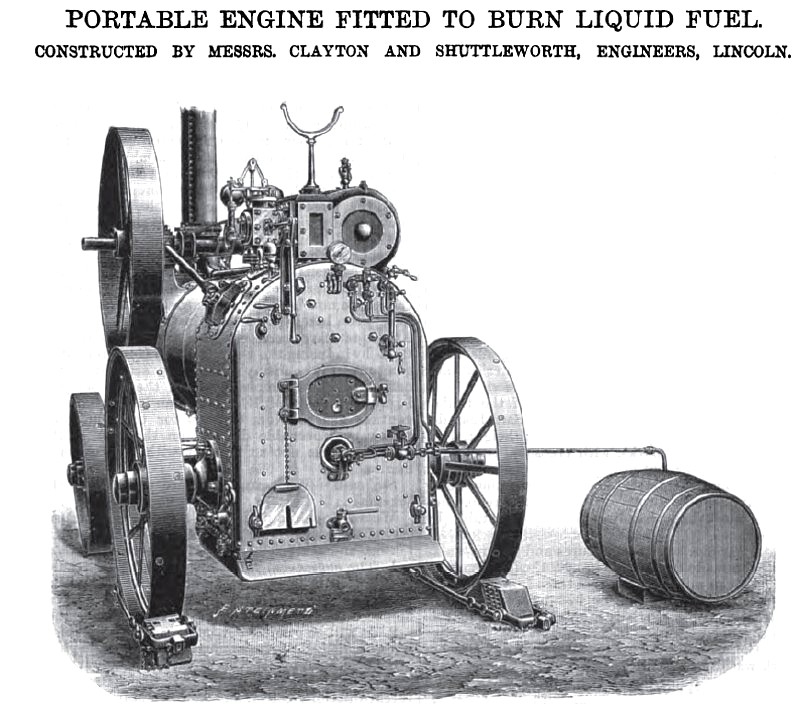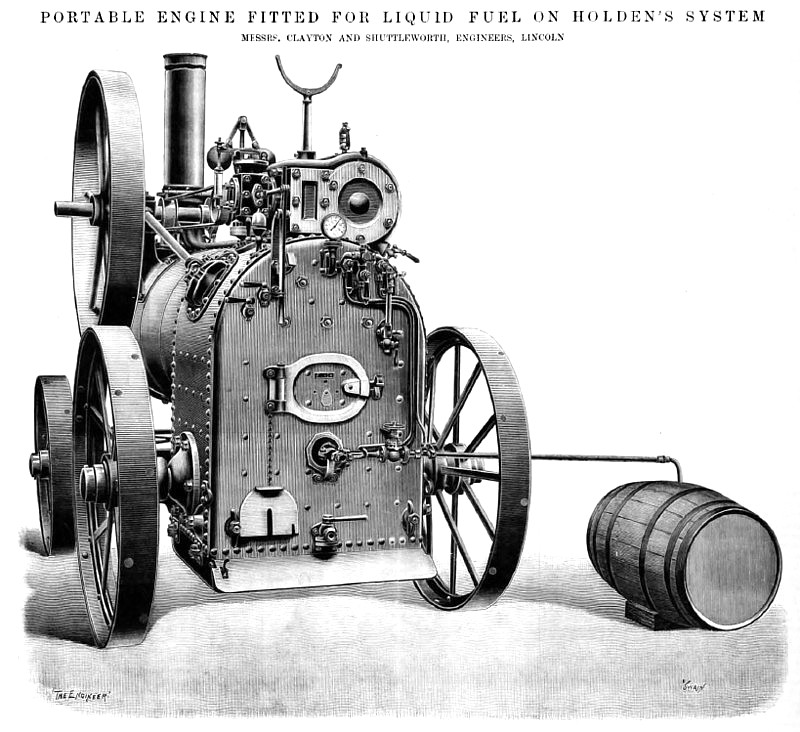|
Title: |
1893 Article- Clayton, Shuttleworth & Co., Portable Steam Engine |
|
Source: |
Engineering Magazine, V55, 16 Jun 1893, pg 831 & 23 Jun 1893 pg. 541 |
|
Insert Date: |
3/19/2013 8:05:46 PM |
PORTABLE ENGINE FITTED TO BURN LIQUID FUEL
This portable engine has been designed by its makers, Messrs. Clayton and Shuttleworth, engineers, Lincoln, to work with liquid fuel on Holden's system. This method of using petroleum has the great advantage that coal can be burnt equally as well as petroleum or tar in case the price of these latter rises. Of course liquid fuel will only be used when cheaper than coal, as it, normally is in some parts of South America. The ability to use coal at need is, however, a great convenience, as it prevents a " corner" being formed by the oil merchants; this actually occurred, we believe, in Peru, when the first locomotives fitted up with Holden's apparatus were imported into that country. The engine shown has worked perfectly satisfactorily with oil. A cast-iron baffle plate, protected with fireclay, is used to prevent the direct impact of the flame on the tube-plate of the boiler. The grate when using oil is covered with lumps of broken firebrick and limestone, small quantities of coal being also introduced at intervals. Very little smoke and no sparks are produced when liquid fuel is thus burnt, and the fireman's labours are greatly reduced, as the oil or tar is automatically fed to the furnace by an injector.
The same firm also shows a beautifully finished compound engine, which will indicate about twenty-five horse power. The frame is of wrought iron, with the exception of the cross transom at the fly-wheel end, which is of cast iron. We may mention here that the firm has fitted a very ingenious modification of Holden's system of burning mineral oils to portable engines, but they have not exhibited it among machinery in motion. We illustrate it on p. 541. It will be seen that a Holden injector is attached to the back of the engine. The suction pipe dips into a cask of petroleum. Nothing more simple can be imagined, and we are told that the action of the apparatus leaves nothing to be desired. So it would seem that the oil engine is not to have a monopoly of mineral fuel.
Image courtesy of Grace's Guide.
http://www.gracesguide.co.uk/images/0/09/Er18930623.pdf |
|
 1893 Clayton, Shuttleworth & Co., Portable Steam Engine to Burn Liquid Fuel
1893 Clayton, Shuttleworth & Co., Portable Steam Engine to Burn Liquid Fuel
 1893 Clayton, Shuttleworth & Co., Portable Steam Engine to Burn Liquid Fuel
1893 Clayton, Shuttleworth & Co., Portable Steam Engine to Burn Liquid Fuel
|
|